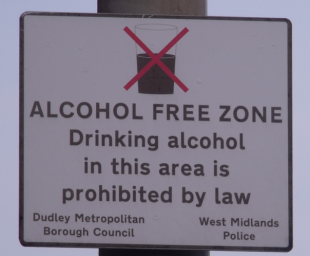Drafting a Successful Workplace Drug and Alcohol Policy


Discussing drugs and alcohol with your employees can be a highly personal and uncomfortable subject. However, since more than 75% of illicit drug users are currently employed, and drug abuse costs U.S. businesses an estimated $100 billion annually in damages and lost productivity, it may be time to start the conversation.
Framing your company’s drug and alcohol policy doesn’t have to be draconian or overbearing-- the policy simply needs to accomplish what you need based on local legal requirements, liability, productivity, and ultimately fit within your company culture. To that effect, we've developed a few guidelines to help you draft your company’s drug and alcohol policy and start the conversation with your employees in a respectful and professional manner.
Policy Considerations
Legal requirements: Satisfying legal requirements should be the first and foremost goal of your drug and alcohol policy. Some states and agencies are governed by specific laws for drug-testing and drug/alcohol control in the workplace. Specifically, the Drug Free Workplace Act of 1988 restricts the presence of drugs and alcohol in the workplaces of government organizations and government contractors and grantees. As regulations differ by state, consult your local laws first.
Liability: Protecting yourself from legal trouble and maintaining a safe work environment should also be a key facet of your policy. If you don’t have a specific policy and an accident occurs, you can be held liable for damages. If you have an anti-drug and alcohol policy in place and it is found that the employee(s) involved in the accident were under the influence, you have the right to terminate their employment and will not be held liable.
Productivity: Absenteeism and tardiness due to drug and alcohol use can significantly hurt the productivity of your employees. A drug and alcohol policy should lay down specific guidelines for what you expect of your employees. By linking reprimands with unacceptable behavior, you can cut down on instances of intoxication at work and/or missing work due to drug and alcohol issues.
Additionally, if you identify employees exhibiting signs of abuse or dependence you may benefit from providing resources (such as counseling or intervention programs) in your policy to help them deal with their abuse problems. This can save you the cost of employee turnover and will help to get them back to optimum productivity.
Culture: You may or may not care whether or not employees use drugs and alcohol inside or outside of work. The decision is yours, as long as the law doesn’t require a drug-free mandate and your employees are not in a position where a workplace accident will likely occur. While illegal drugs should never be used in the workplace, alcohol consumption at work is becoming more prevalent across the business world. Your company may decide to completely remove alcohol consumption during any work-related activity. The decision comes down to what works for your company and employees.
Enforcement
If you decide drug/alcohol screening should be a part of your policy, you have a few options on how to go about it:
- Job applicant screening: This upfront method of drug testing ensures you are hiring drug-free candidates, however it does not ensure that employees will not use once they are hired.
- Post-accident screening: This screening method is used after a workplace accident occurs. If you have a drug and alcohol policy in place and your employee tests positive, you have grounds to terminate.
- Randomized and periodic screening: Randomized does not always mean spur of the moment. You can inform your employees that they will be tested within a specific timeframe.
- Reasonable suspicion testing: If an employee exhibits physical and mental characteristics of drug and/or alcohol use while they are on the job, you have grounds to screen them. Try this course to guide your reasonable suspicion testing.
Policy Highlights
- Clear and specific policies and expectations made available to all employees
- How your policy will be enforced (how you will screen employees, if at all)
- Clear guidelines for the actions to be taken if an employee is found under the influence at work
- Resources and psychological support options for employees suffering from drug and alcohol abuse
How does your company handle drugs and alcohol? What policies have you found work for you?



